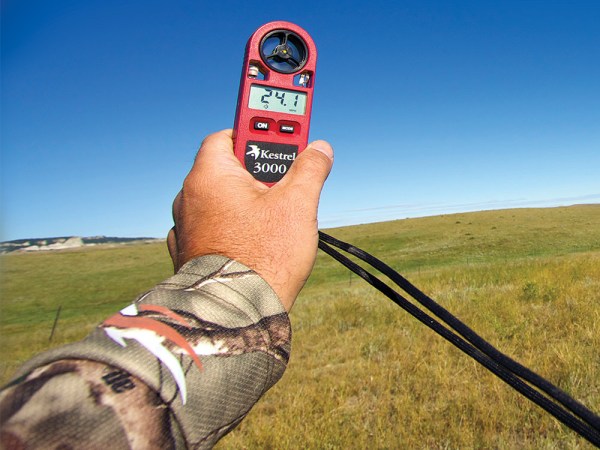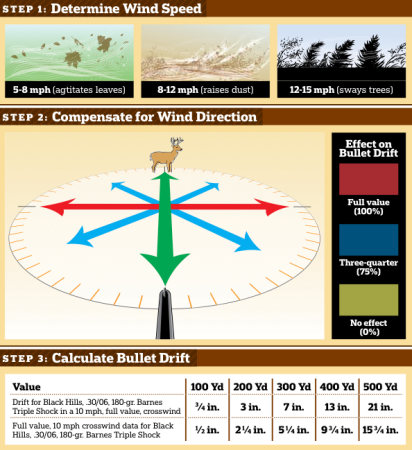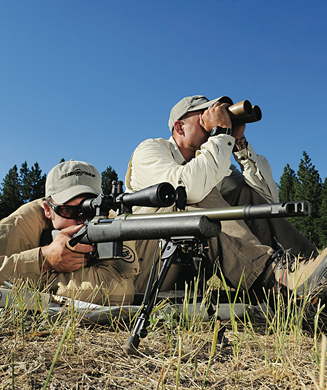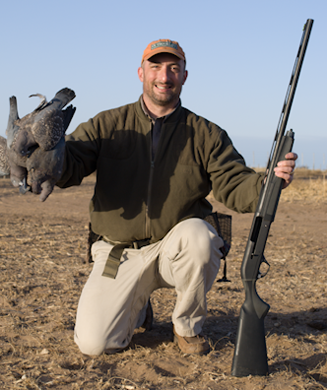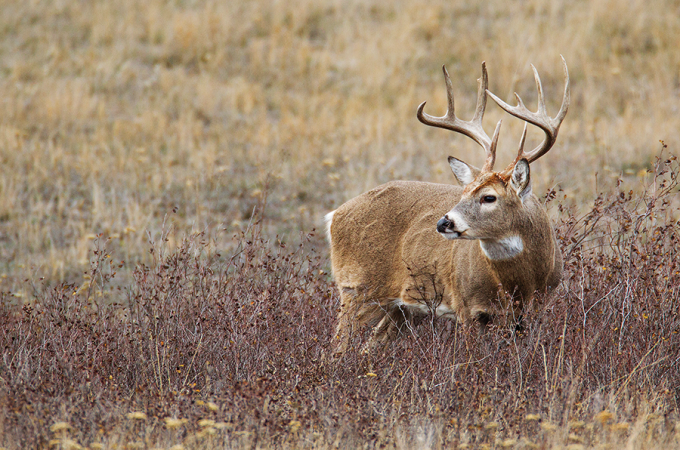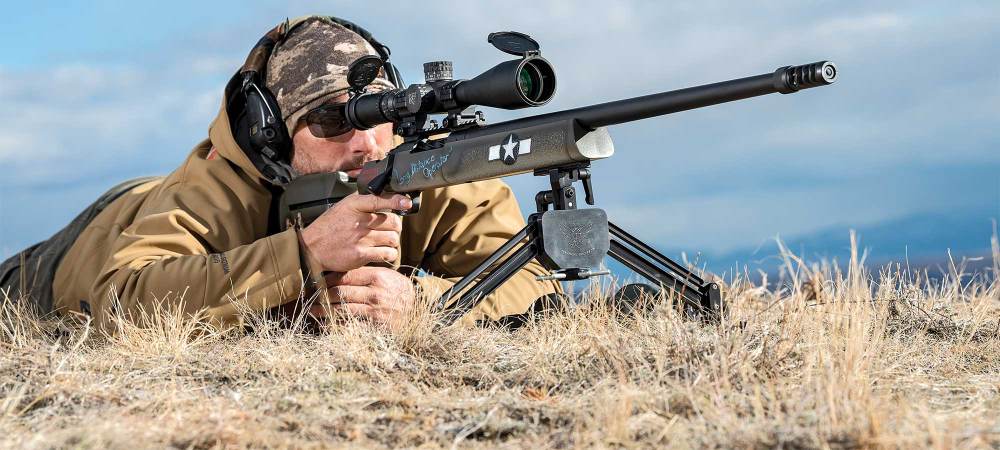We may earn revenue from the products available on this page and participate in affiliate programs. Learn More ›
If there is an art to long-range shooting, it’s reading the wind. There are some helpful rules of thumb to use when observing the effect of wind on the environment around us. By looking at how much surrounding vegetation is being moved, we can make an educated guess about the speed and, under many circumstances, the direction of the wind. A wind lightly felt upon your face is 3–5 mph; a 5–8 mph breeze agitates leaves on trees; an 8–12 mph wind raises dust; a 12–15 mph wind sways small trees; and open water begins to whitecap at 17 mph.
Another useful tool is to observe mirage, which occurs when reflected heat bends light rays, creating visual distortion. When looking through a scope or binoculars, mirage can be used to estimate wind speeds up to about 15 mph. Wind faster than that flattens mirage.
You will need to know both the speed and direction of the wind to make an accurate adjustment for your point of impact. Wind drift figures are based on what is known as a “full-value” condition, which is found when the wind is blowing at 90 degrees to the target. The more the wind blows in parallel to the shooter’s line of sight, the less the wind will affect bullet flight. (Wind that is coming in at a 45-degree angle from any direction is roughly a 3⁄4-value wind, meaning a full- value drift of 10 inches would translate to 7 1⁄2 inches of actual wind drift.) Only time spent shooting under field conditions will hone these skills, but developing them is essential to shooting mastery.


